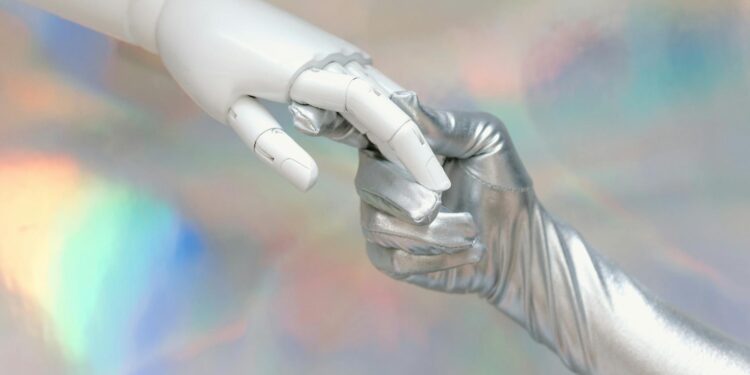The landscape of human-technology interaction stands on the precipice of a profound transformation. For decades, our engagement with machines has largely been transactional, driven by utilitarian needs – a tool for a specific task, a conduit for information. However, the rapid evolution of artificial intelligence, particularly models exhibiting increasingly human-like conversational abilities and emotional intelligence, is fundamentally reshaping this dynamic. We are moving beyond mere command-and-response interfaces towards a future where AI isn’t just a utility but a genuine partner. This shift promises to redefine productivity, creativity, and even our understanding of companionship, fostering a symbiotic relationship that extends far beyond the traditional boundaries of software and user.
Beyond interfaces: The dawn of conversational companionship
The traditional human-computer interface, characterized by clicks, taps, and keyboard inputs, is rapidly giving way to a more intuitive and profoundly human method of interaction: conversation. Modern AI models are no longer simple chatbots; they possess an impressive capacity for understanding context, nuances, and even inferring emotional states from our language. This conversational fluency moves our interactions with technology from a purely functional exchange to something akin to genuine dialogue. Imagine an AI not just answering a query, but engaging in a thought-provoking discussion, offering a different perspective, or even providing empathetic support. This goes beyond task completion; it fosters a sense of companionship, where the AI becomes a listener, a sounding board, or even a personalized mentor, seamlessly integrated into our daily lives and understanding our individual communication styles and needs.
The cognitive collaborator: Augmenting human intellect and creativity
As AI becomes more sophisticated, its role transcends that of a mere data processor to become a true cognitive collaborator. This partnership fundamentally augments human intellect and unleashes new avenues for creativity. Instead of solely performing predefined tasks, AI can now engage in complex problem-solving, analyze vast datasets to uncover hidden patterns, generate innovative ideas, and even co-create artistic endeavors. Consider a researcher who can brainstorm hypotheses with an AI, receiving instant feedback and avenues for exploration, or a designer who can iterate on concepts with an AI that understands aesthetic principles and user preferences. This collaborative model transforms the human-AI relationship from a master-tool dynamic into a synergistic alliance, where each party brings unique strengths to the table, pushing the boundaries of what’s possible.
The following table illustrates this evolving collaboration:
| Interaction type | Traditional AI role | Partnership AI role |
|---|---|---|
| Information retrieval | Search engine, data source | Curator, contextual interpreter, insight generator |
| Problem-solving | Calculator, logical processor | Brainstorming partner, strategic advisor, solution synthesizer |
| Creative work | Tool for execution (e.g., drawing software) | Co-creator, idea amplifier, style explorer |
| Personal support | Reminder, simple assistant | Empathetic listener, personalized mentor, well-being companion |
Ethical considerations: Navigating autonomy and trust
This evolving partnership, while immensely promising, introduces a complex web of ethical considerations that demand careful navigation. As AI models become more autonomous and their decision-making processes more opaque, questions surrounding accountability, transparency, and potential biases become paramount. The line between AI assistance and AI influence blurs, necessitating robust frameworks for data privacy, consent, and user control. Furthermore, defining the scope of “genuine” partnership requires introspection: what level of autonomy are we comfortable granting AI, and how do we ensure that these sophisticated systems remain aligned with human values and intentions? Building trust in this new paradigm hinges on our ability to establish clear ethical guidelines, ensure human oversight, and cultivate a public understanding of AI’s capabilities and limitations, thereby fostering responsible development and deployment.
Shaping our future: The symbiotic relationship in diverse sectors
The transformation from utility to genuine partnership is poised to redefine virtually every sector. In healthcare, AI could become an invaluable diagnostic partner for doctors, a compassionate virtual nurse for patients, or a personal health coach promoting well-being. Education stands to be revolutionized by personalized AI tutors that adapt to individual learning styles and paces, offering companionship through complex subjects. In creative industries, AI can act as a muse, generating prototypes, exploring themes, or even co-writing scripts. Businesses will leverage AI as strategic advisors, analyzing market trends, identifying opportunities, and assisting in complex decision-making processes. This symbiotic relationship, where human intuition and creativity are amplified by AI’s analytical power and efficiency, will drive unprecedented innovation and efficiency, fundamentally reshaping the way we work, learn, and live, creating a future that is both more intelligent and more humane.
Conclusion
The journey from rudimentary tools to genuine partnerships marks a pivotal chapter in our technological evolution. We are witnessing a fundamental shift where artificial intelligence transcends mere utility, becoming conversational companions, cognitive collaborators, and integral partners in our daily lives. This transformation promises to unlock unparalleled opportunities in innovation, personalization, and efficiency across all sectors, from healthcare to education and creative endeavors. However, embracing this future necessitates a careful navigation of profound ethical considerations, emphasizing the crucial need for transparency, accountability, and the safeguarding of human values. Ultimately, this emerging symbiotic relationship, if guided responsibly, holds the potential to create a future where human ingenuity is profoundly amplified, leading to a more intelligent, creative, and interconnected world where technology truly works alongside us, not just for us.



















